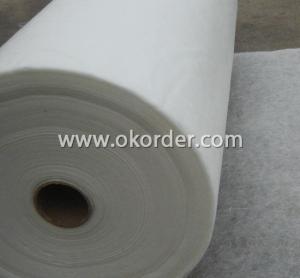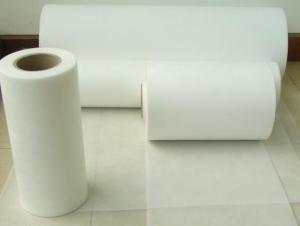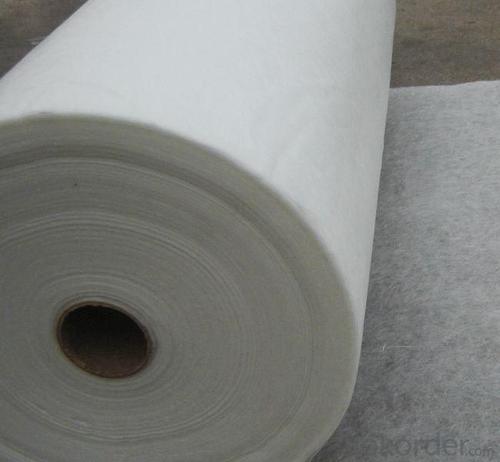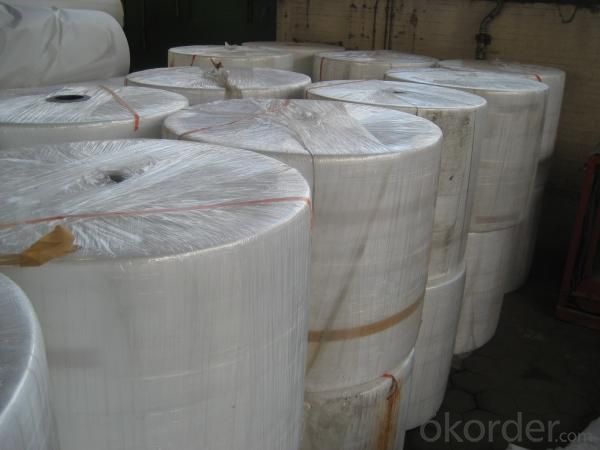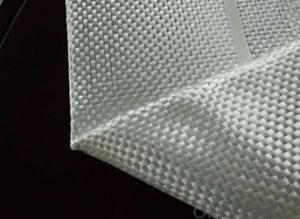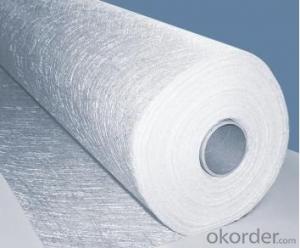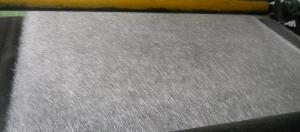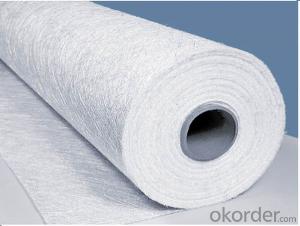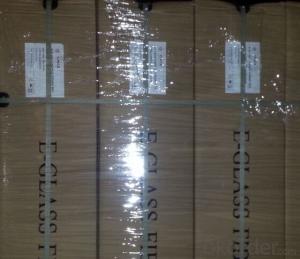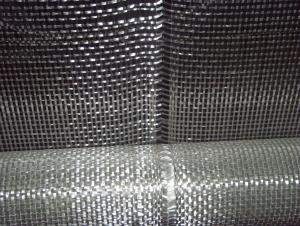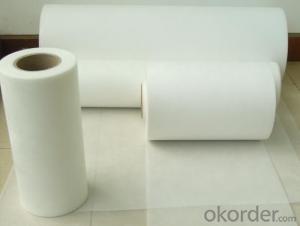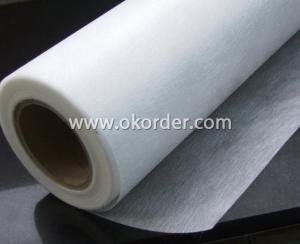Fiberglass Mat Tissue Mat
- Loading Port:
- China Main Port
- Payment Terms:
- TT or LC
- Min Order Qty:
- 2000Square Meter m²
- Supply Capability:
- 60000 Square Meter Per Month m²/month
OKorder Service Pledge
OKorder Financial Service
You Might Also Like
Packaging & Delivery of Tissue Mat
| Packaging Detail: | Carton |
| Delivery Detail: | 20Days |
Specifications of Tissue Mat
GSM: 20g/m2 to 280g/m2
Wdith: 1m to 2.1m
Max Roll Length: 3800m/Roll
Characteristics of Tissue Mat
It is made with water-dispersed chopped strands by wet technic and has being our strong product for export in the past decade. The width of finished product is 1m, 2m or 2.06m and length is 50m, 100m, 300m, 500m, 1500m, 2800m, 3600m, 3700m, or 3800m/roll. We also can cut it into the tape of width 30mm, 50mm, 100mm or 200mm and length 25m or 100m/roll. The area weight is 20g/m2, 25g/m2, 30g/m2, 45g/m2, 50g/m2, 60g/m2, 70g/m2, 80g/m2, 90g/m2, 100g/m2, 260g/m2 or 280g/m2.
As per clients’ application, we also can supply the following products.
1.fiberglass roofing tissue with or without 66 yarns (45g/m2, 50g/m2, 60g/m2, etc)
2.fiberglass surface tissue for FRP products
3.fiberglass tissue for pipe wrapping
4.PVC floor tissue (such as 40g/m2 x 2.06m width x 2800m/roll)
5.Fiber glass mat (CCL CEM-3 using)
6.AGM battery separator tissue
Meantime, we also can process some new products as per clients’ specical requirement, pls. see them as follows:
1.colorful tissue (yellow, red, blue, etc)
2.fiberglass tissue with one side coating of cement (the base tissue is 30g/m2~45g/m2 and coating is 15g/m2. The finished product is fire-proof and heat-resistant).
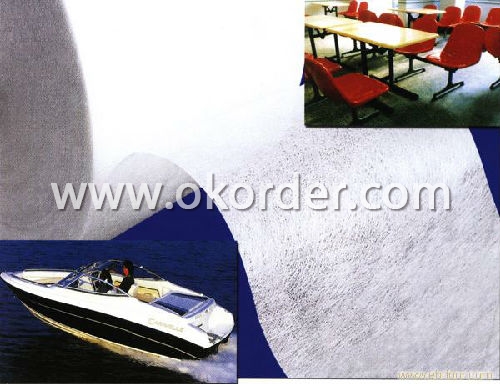
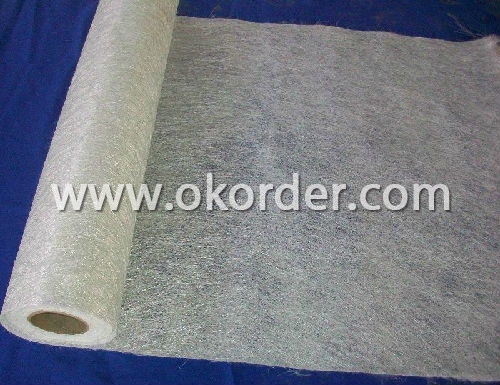
- Q: Can fiberglass mat tissue be used for architectural facades?
- Indeed, architectural facades can make use of fiberglass mat tissue. This lightweight and flexible material finds wide application in diverse construction projects, including architectural facades. It boasts numerous benefits, ranging from its impressive strength and durability to its exceptional resistance against weather and fire. Moreover, fiberglass mat tissue lends itself easily to molding into various shapes and sizes, thus proving suitable for intricate and distinctive architectural designs. Its adaptability and visual allure render it a favored option among architects and designers when aiming to fashion visually pleasing and practical facades.
- Q: What is the moisture resistance rating of fiberglass mat tissue?
- The moisture resistance rating of fiberglass mat tissue may differ depending on the specific product and manufacturer. Nonetheless, fiberglass mat tissue is renowned for its exceptional moisture resistance properties. It is typically engineered to exhibit high resistance against water absorption, rendering it suitable for applications where moisture exposure is a concern. This moisture resistance attribute aids in preserving the structural integrity and performance of the fiberglass mat tissue, even under humid or wet conditions. It is crucial to consider the manufacturer's provided product specifications to ascertain the precise moisture resistance rating when selecting fiberglass mat tissue for a particular application.
- Q: How does the cost of fiberglass mat tissue compare to other reinforcement materials?
- Compared to other reinforcement materials, fiberglass mat tissue is generally more affordable in terms of cost. It is widely utilized in a range of industries, including construction and automotive, due to its cost-effectiveness. In contrast, materials like carbon fiber or aramid fibers can be considerably pricier, which makes fiberglass mat tissue a favored option for many applications that necessitate reinforcement. Furthermore, fiberglass mat tissue provides exceptional strength and durability, thereby presenting a budget-friendly solution for projects that require reliable reinforcement.
- Q: Can fiberglass mat tissue be used for insulating concrete forms (ICFs)?
- Fiberglass mat tissue is indeed suitable for insulating concrete forms (ICFs). By acting as a reinforcement layer, it can be directly applied to the surface of ICFs. Its primary function is to enhance the strength and durability of the concrete, while simultaneously improving the insulation properties of the ICF system. To secure the fiberglass mat tissue to the ICF surface, it is typically embedded in a thin layer of adhesive or mortar. This combination of materials creates a robust and insulated barrier that effectively reduces heat loss and enhances energy efficiency in buildings. Moreover, the lightweight and easy-to-handle nature of fiberglass mat tissue makes it a convenient choice for ICF installations.
- Q: What are the different types of fiberglass mat tissue available?
- There are various types of fiberglass mat tissue available, including chopped strand mat (CSM), continuous filament mat (CFM), and surface veil mat. Each type has different characteristics and is used for specific applications in industries such as construction, automotive, and marine. CSM is commonly used for general purpose applications, CFM provides higher strength and stiffness, and surface veil mat is used for surface finishing and improving the aesthetics of fiberglass products.
- Q: Does fiberglass mat tissue provide good fire protection?
- No, fiberglass mat tissue does not provide good fire protection.
- Q: How does fiberglass mat tissue compare to mineral wool insulation?
- Fiberglass mat tissue and mineral wool insulation have different properties and applications. Fiberglass mat tissue is typically used as a reinforcement material for composites or as a facing material for insulation products. It provides good strength, flexibility, and resistance to moisture. On the other hand, mineral wool insulation is primarily used for thermal and acoustic insulation in buildings. It offers excellent fire resistance, sound absorption, and thermal performance. While both materials have their own advantages, the choice between them depends on the specific requirements of the project.
- Q: How does fiberglass mat tissue perform in terms of dimensional stability?
- The dimensional stability of fiberglass mat tissue is exceptional. This is due to its unique composition and manufacturing process, which result in minimal shrinkage or expansion when exposed to temperature variations or moisture. As a result, fiberglass mat tissue is an ideal material for various applications in the construction industry, where dimensional stability is crucial. It is commonly used to reinforce walls, roofs, and floors. The consistent size and shape of fiberglass mat tissue ensure that it maintains its original dimensions over time, providing long-lasting durability and reliability. Furthermore, its dimensional stability allows for precise cutting, shaping, and installation, reducing waste and increasing efficiency in manufacturing processes. Overall, the excellent dimensional stability of fiberglass mat tissue makes it a preferred choice in industries where accurate and stable dimensions are essential.
- Q: Is fiberglass mat tissue resistant to UV radiation?
- No, fiberglass mat tissue is not resistant to UV radiation.
- Q: Can fiberglass mat tissue be used for reinforcing concrete structures?
- Yes, fiberglass mat tissue can be used for reinforcing concrete structures. Fiberglass mat tissue is a thin, lightweight material made from woven glass fibers. It offers high strength-to-weight ratio and excellent corrosion resistance, making it an ideal choice for reinforcing concrete structures. When used as reinforcement in concrete, fiberglass mat tissue is typically embedded into the concrete mix. It helps improve the tensile strength and ductility of the concrete, preventing cracks and increasing its overall durability. Fiberglass mat tissue is commonly used in applications such as precast concrete panels, concrete pipes, and concrete overlays. It provides reinforcement to these structures, allowing them to withstand heavy loads and resist cracking, especially in areas where concrete alone may not be sufficient. Furthermore, fiberglass mat tissue is also resistant to chemicals and environmental factors, making it suitable for use in harsh conditions or exposed environments. It does not corrode or rust like traditional steel reinforcements, ensuring the longevity and structural integrity of the concrete structure. Overall, fiberglass mat tissue is a reliable and effective option for reinforcing concrete structures. Its lightweight nature, high strength, corrosion resistance, and durability make it a popular choice in the construction industry.
1. Manufacturer Overview
| Location | Hebei,China |
| Year Established | 2008 |
| Annual Output Value | Above US$20 Million |
| Main Markets | Mid East;Western Europe:South Asian |
| Company Certifications | ISO9001:2000;ISO14001:1996;GB/T28001:2001 |
2. Manufacturer Certificates
| a) Certification Name | |
| Range | |
| Reference | |
| Validity Period |
3. Manufacturer Capability
| a) Trade Capacity | |
| Nearest Port | Tianjin |
| Export Percentage | 80% |
| No.of Employees in Trade Department | 350 People |
| Language Spoken: | English;Chinese;Korean |
| b) Factory Information | |
| Factory Size: | Above 100,000 square meters |
| No. of Production Lines | Above 12 |
| Contract Manufacturing | OEM Service Offered;Design Service Offered |
| Product Price Range | Average |
Send your message to us
Fiberglass Mat Tissue Mat
- Loading Port:
- China Main Port
- Payment Terms:
- TT or LC
- Min Order Qty:
- 2000Square Meter m²
- Supply Capability:
- 60000 Square Meter Per Month m²/month
OKorder Service Pledge
OKorder Financial Service
Similar products
Hot products
Hot Searches
Related keywords
